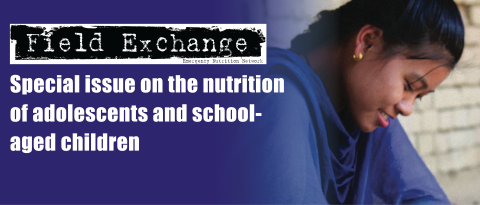Addressing Knowledge Gaps in Adolescent Nutrition
This is a summary of the following paper: Canavan, C. & Fawzi, W.W. (2019). Addressing Knowledge Gaps in Adolescent Nutrition: Toward Advancing Public Health and Sustainable Development. Current Developments in Nutrition, 3(7). Available At: https://academic.oup.com/cdn/article/3/7/nzz062/5485636
Adolescence is a period of significant physical, cognitive and social development that establishes the trajectory for adult health status. Adolescence marks a second window of opportunity when individuals can catch up on stunted growth during childhood. Improvements in nutritional status can also yield better attendance and performance at school and correcting nutritional deficiencies and improving diets for adolescents allows them to enter pregnancy in a healthier state. Nevertheless, malnutrition remains a key challenge for adolescents in developing countries through suboptimal dietary intake. To stifle these challenges and promote opportunities, knowledge gaps in adolescent nutrition must be addressed.
Firstly, iron and folic acid supplementation is effective in reducing anaemia and preventing neural tube defects. However, optimal implementation strategies to determine the acceptability and effectiveness of the supplementation dose, the delivery and duration of use have yet to be identified. Macronutrient supplementation, namely protein and calorie-dense supplements, offer significant opportunities to enable catch-up growth during adolescence. However, there is a paucity of evidence regarding possible adverse outcomes for those who are overweight or obese.
Secondly, with one third of adolescents globally being food insecure and the average intake of fruit and vegetables for adolescents remaining below World Health Organization recommendations (400g/day), school-based nutrition interventions offer a promising avenue to improve dietary quality in this age group. Nevertheless, more evidence is needed to determine how food environments such as school settings shape dietary behaviours and how this affects adolescent food security and dietary quality.
Thirdly, as almost 20% of women in developing countries have a live birth by the age of 18 and young mothers have greater nutritional requirements due to foetal development while they are still growing, nutrition programmes should be integrated with delayed pregnancy interventions to improve infant and maternal health and nutrition outcomes. Potential interventions should combine adolescent empowerment approaches with community- and school-based approaches.
Closing these knowledge gaps requires a sustained, multi-sector approach from public health actors with health surveillance improvements as well as adolescent, parent and community engagement to determine evidence-based solutions. However, investing in adolescents today offers the promise of lifelong gains for them and their families.


